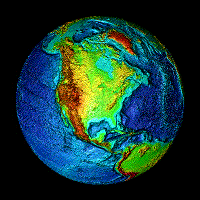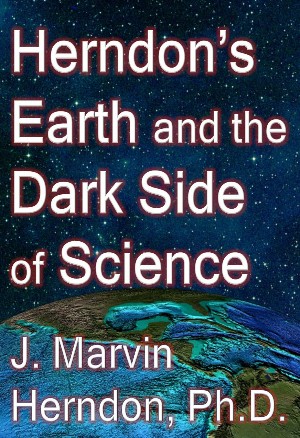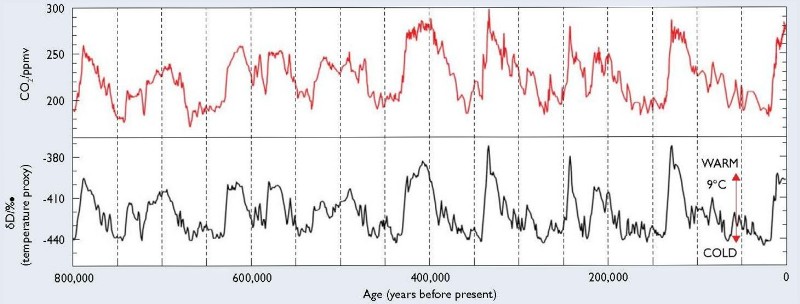

Herndon's Earth and the Dark Side of Science
 
Herndon's Earth and the Dark Side of Science |
PREFACE
Herndon’s Earth and the Dark Side of
Science
© J. Marvin Herndon, 2014 All Rights Reserved
 Now,
as in ancient times, we share the common quest to understand our world and its
place and origin in the cosmos. Although we live in a technologically advanced
society, the origin and nature of our own planet has to a large extent been a
great mystery. On the one hand, we live for just a brief moment in time on an
ancient, complex, and largely inaccessible planet. On the other hand, scientists
are increasingly becoming more narrowly focused specialists. Beneficial as this
may be in terms of honing expertise via various disciplinary inquires, it
nevertheless limits our ability to understand the ever-important big picture. As
a consequence of this specializing tendency, fundamental advances, paradigm
shifts, despite their importance, tend to come about slowly and infrequently.
They have however been made, in the geosciences for example by Vladimir
Vernadsky (1863-1945) in Russia and Eduard Suess (1831-1914) in Austria, and
will continue to be made albeit not very often.
Now,
as in ancient times, we share the common quest to understand our world and its
place and origin in the cosmos. Although we live in a technologically advanced
society, the origin and nature of our own planet has to a large extent been a
great mystery. On the one hand, we live for just a brief moment in time on an
ancient, complex, and largely inaccessible planet. On the other hand, scientists
are increasingly becoming more narrowly focused specialists. Beneficial as this
may be in terms of honing expertise via various disciplinary inquires, it
nevertheless limits our ability to understand the ever-important big picture. As
a consequence of this specializing tendency, fundamental advances, paradigm
shifts, despite their importance, tend to come about slowly and infrequently.
They have however been made, in the geosciences for example by Vladimir
Vernadsky (1863-1945) in Russia and Eduard Suess (1831-1914) in Austria, and
will continue to be made albeit not very often.
Many consider the continental drift
theory of Alfred Wegener (1880-1930) to be the paradigm shift that eventually
matured to plate tectonics theory. In setting forth that theory, Wegener used
the title The Origin of Continents and Oceans [1, 2]. Why, you might ask, did he
not use the title Wegener’s Earth? Perhaps, one might guess, it is that others
before him since the time of Abraham Ortelius (1527-1598) had proposed continent
displacement for a variety of reasons or perhaps because Wegener’s theory was
incomplete, lacking a plausible mechanism and an adequate energy source.
Possibly. But I doubt Wegener would have considered such a title as he was fully
aware of the limitations of continental drift theory, and I might add plate
tectonics theory, as indicated by his statement, page 167 [2]:
The determination and proof of relative
continental displacements, as shown by the previous chapters, have proceeded
purely empirically, that is, by means of the totality of geodetic, geophysical,
geological, biological and paleoclimatic data, but without making any
assumptions about the origin of these processes. This is the inductive method,
one which the natural sciences are forced to employ in the vast majority of
cases. The formulation of the laws of falling bodies and of the planetary orbits
was first determined purely inductively, by observation; only then did Newton
appear and show how to derive these laws deductively from the one formula of
universal gravitation. This is the normal scientific procedure, repeated time
and again. The Newton of drift theory has not yet appeared.
Now, you might ask, why Herndon’s
Earth? Humbly, I would say, this is the reason: For the first time ever, from
Earth’s early formation as a Jupiter-like gas giant, I am able to derive
virtually all of the geological and geodynamic behavior of our planet, including
the origin of mountains characterized by folding, the primary initiation of
fjords and submarine canyons, the origin of continents and oceans, seafloor
topography without mantle convection, Earth’s internal composition, its
previously unanticipated and potentially variable energy sources, its variable
magnetic field, petroleum and natural gas deposits, and the non-anthropogenic
basis of atmospheric carbon dioxide increases.
There is also another reason for the
title Herndon’s Earth. In 1993, I demonstrated the feasibility of a natural
nuclear fission reactor at Earth’s center, called the georeactor, one of the
consequences of Earth’s early formation as a Jupiter-like gas giant. With
confirmation of my calculations and with subsequent developments, other
georeactors at places within the Earth other than its center were suggested and
published. However, none of these “copy-cat” georeactors were potentially viable
as, lacking confinement, they would melt down to Earth’s center, the location
of, now probably better to say, “Herndon’s georeactor,” to distinguish it from
these other impracticable reactors.
But what about the rest of the title,
the Dark Side of Science? I didn’t wake up one morning with the idea of Earth
having originated as a gas giant. In the 1970s I began to develop the necessary
understanding, for example, by realizing that the inner core of the Earth, an
object about the size of the Moon and three times as massive, might have a
composition unlike the idea that had prevailed for 40 years. In 1979, I
published the new idea in the Proceedings of the Royal Society of London [3],
but instead of engendering debate and discussion, it was ignored and its
proposer was arguably “excommunicated.” In science one often makes discoveries,
especially about the big picture that have many downstream consequences for
individual studies by asking the question: “What’s wrong with this picture?”
With respect to scientists’ behavior, I asked the same question and I share here
what I have learned about the forces that have for decades been diminishing
American science capability, corrupting individuals and the institutions they
serve, and that have led geoscientists into becoming part of what I have named
“the malevolent political agenda.” Now it should be said not all the
participants in a malevolent political agenda are themselves consciously
malevolent; they may be lazy, ignorant, or compromised by the need to protect
their careers, funding, or social milieu. Nonetheless, we must recognize that
the political agenda in which they are involved is itself malevolent, taking on
a life of its own, to the detriment of the methods of science and the search for
truth, not to mention the national progress and public safety.
Scientific specialization can be like
an edifice built on a corrupt foundation or the proverbial house of cards;
standing seemingly sturdily or precariously for a while but becoming
increasingly unviable with each new wing or addition. This has been the case, in
my not-so-humble judgment, with the growth of geoscience. Geoscientists have
steadfastly been building upon a half-century old misunderstanding of Earth’s
behavior which is considerably different from the behavior that is a consequence
of Earth’s early formation as a Jupiter-like gas giant. The ramifications are
all about us, but none are as ubiquitous as the idea that increasing amounts of
carbon dioxide in the atmosphere are anthropogenic (human produced) and are
causing global warming via the greenhouse effect. Rather, I would argue that
variability of Earth’s major energy sources, not previously considered, is
responsible for the observed increase over at least the last 40 years in the
annual number of earthquakes of magnitude ≥6 and for changes in seawater
temperature which is directly related to atmospheric carbon dioxide composition.
The relationship between seawater temperature and atmospheric carbon dioxide is
evident over a period of 800,000 years from measurements of an Antarctic ice
core:
Correlation between local
temperature and trapped carbon dioxide (CO2) over a time span of 800,000 years
from an Antarctic ice core (see Figure 1.5).
 Reproduced with permission of the
British Antarctic Survey.
Reproduced with permission of the
British Antarctic Survey.
One
may now say, with regard to mainstream, increasingly strident, ideological, and
politicized comments on anthropogenic (human caused) global warming, variability
of atmospheric carbon dioxide content is related to variable Earth-heat
production, a consequence of Earth’s early formation as a Jupiter-like gas
giant. Human activity, I submit, is not to blame.
This all-too-brief introduction does not begin to reveal
the connections between Earth’s origin and the basis of similarities and
differences of other planets in our Solar System, or how stars including our own
ignite, or the reason why the multitude of galaxies display just a few prominent
patterns of luminous stars. So, please enjoy Herndon’s Earth and the Dark Side
of Science.
Preface References
1. Wegener, A., Die Entstehung der Kontinente und Ozeane.
fourth ed1929, Braunschweig: Friedr. Vieweg & Sohn. 246.
2. Wegener, A., The Origin of Continents and Oceans.
Translated by John Biram1966, New York: Dover Publications, Inc.
3. Herndon, J.M., The nickel silicide inner core of the
Earth. Proc. R. Soc. Lond, 1979. A368: p. 495-500.